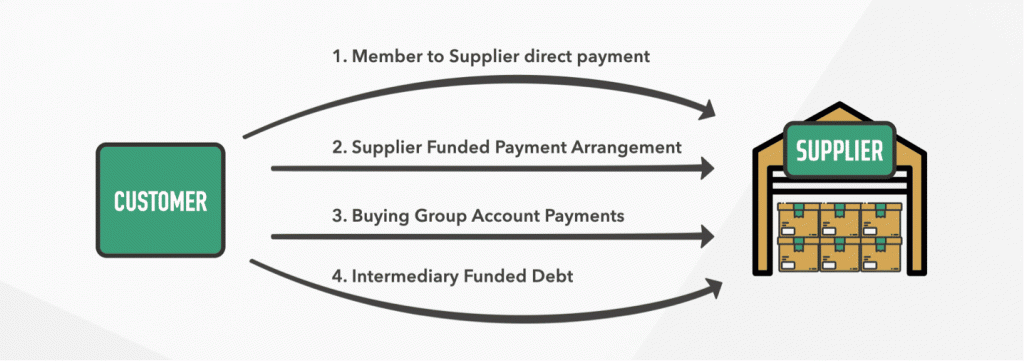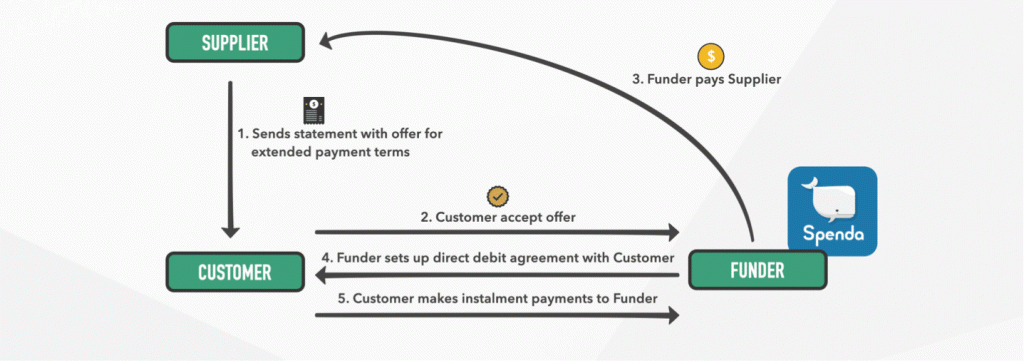What Is BPSP And What Does It Mean For Spenda
Published: December, 7th 2020

Business owners, suppliers and customers will be the big winners after Cirralto (the parent company behind Spenda) secured a Business Payments Solution Provider (BPSP) agreement.
The agreement helps us deliver our vision to create a Ledger to Ledger payments service between businesses that provides operational efficiencies, improves trading relationships and most of all creates liquidity and cash flow optimization outcomes for our customers.
With the BPSP agreement, we can deliver businesses integrated eInvoicing, ePayment and financing services that will bring liquidity and drive cash flow for buyers and sellers.
Changing Customer to Supplier Payments (B2B)
In the current model, business Customers are required to pay their Suppliers statement at the end of each month or a set number of days from the invoice date. Often these payment dates are viewed as a ‘guide’ by the customer, with 53% of invoices paid outside of terms. While a strict credit management regime is often a strength, at times it can create or force customer purchases outside of a Supplier’s network to attract extended terms, resulting in lost revenue for the business if Customers are able to source more favourable terms elsewhere.
Today, B2B payments are accessed as a discrete service and only integrate partially for either the payer or the payee but never both players simultaneously. Traditionally these payments are made directly between the customer and supplier using billing platforms like BPay, ABA based EFT transfer via internet banking and direct merchant credit card facilities. Each of these attracts fees and charges from the processor but none simplify the process end-to-end making the lives of all parties simpler.
With the BPSP agreement we are changing this and giving Customers and Suppliers more ways to trade and pay each other with reduced fees:

Figure 1 – Customer to Supplier payment methods

The BPSP agreement also provides an opportunity to add a funding partnership into the Customer to Supplier payment cycle and create B2B pay by instalment services (or Buy Now, Pay Later on the standard cost of goods sold trade).
Under this approach, Suppliers would:
- Receive full payment of the Customers purchases from the funder and therefore drive their internal cash flow;
- Be able to offer extended terms to their Customers and preserve the Customer’s ability to use their account with the full knowledge that they will not be placed on stop credit if they enter into an instalment arrangement; and
- Use the Spenda system to automate the setup of the pay by instalment collection process from the Customer, so that reconciliation and collections are seamless.

Figure 2 – SpendaCollect Intent to Pay with Funding
As with all Spenda solutions, the additional payment features enabled through the BPSP agreements support automatic reconciliation through our integration with Xero, QuickBooks and MYOB accounting software.
This agreement puts Cirralto, and in effect Spenda, in a prime position for building its market share in digital payments. The agreement is a milestone victory for tech companies creating innovative software to compete on a level playing field with the global payment players.
As a licensed payments service provider, Cirralto is now able to offer streamlined service across both EFTPOS and online payments.
Our aim has been to produce cutting-edge technology to streamline the sales transaction process for businesses and customers. Through this agreement, we’re able to deliver financial services on more favourable terms for our customers.
- https://www.scotpac.com.au/wp-content/uploads/2020/05/ScotPac-SME-Growth-Index-April-2020.pdf
- https://www.rba.gov.au/publications/bulletin/2020/mar/developments-in-banks-funding-costs-and-lending-rates.html
- https://www2.deloitte.com/content/dam/Deloitte/au/Documents/audit/deloitte-au-audit-implications-supplier-finance-arrangements-trade-payables-2018-120718.pdf
- https://www.rba.gov.au/publications/bulletin/2020/mar/developments-in-banks-funding-costs-and-lending-rates.html
